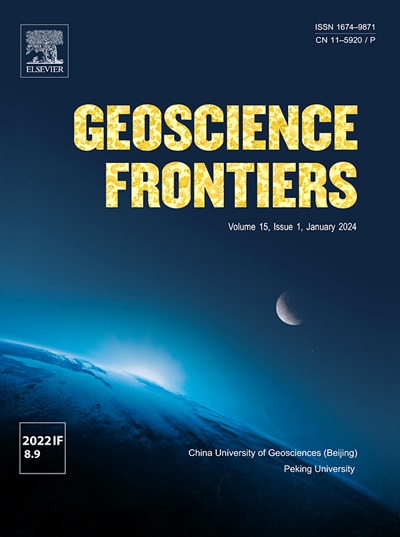Probabilistic characterization of lunar lava tube collapses: Implications for reliability-based design, safety, and exploration
IF 8.9
1区 地球科学
Q1 GEOSCIENCES, MULTIDISCIPLINARY
引用次数: 0
Abstract
The study presents the results of over 30,000 numerical analyses on the stability of lava tubes under lunar conditions. The research considered random irregularities in cave geometry and their impact on stability, with a particular focus on the geometric characteristics of identified collapses. We propose a procedure for extracting the collapse areas and integrating it into the stability analysis results. The results were examined to assess the possibility of describing the geometry characteristics of collapses using commonly applied probability density distributions, such as normal or lognormal distribution. Our aim is to facilitate future risk assessment of lunar caves. Such an assessment will be essential prior to robotically exploring caves beneath the lunar surface and can be extended to be used for planetary caves beyond the Moon. Our findings indicate that several collapse characteristics can be represented by unimodal probability density distributions, which could significantly simplify the candidate selection process. Based on our results, we also highlight several key directions for future research and suggested implications related to their future exploration.

月球熔岩管崩塌的概率特征:对基于可靠性的设计、安全和勘探的影响
这项研究展示了在月球条件下对熔岩管稳定性进行的3万多次数值分析的结果。该研究考虑了洞穴几何形状的随机不规则性及其对稳定性的影响,特别关注已确定崩塌的几何特征。提出了一种提取崩塌区域并将其纳入稳定性分析结果的方法。对结果进行了检查,以评估使用常用的概率密度分布(如正态分布或对数正态分布)描述崩塌几何特征的可能性。我们的目标是促进未来对月球洞穴的风险评估。在机器人探索月球表面下的洞穴之前,这样的评估是必不可少的,并且可以扩展到用于月球以外的行星洞穴。我们的研究结果表明,几种坍塌特征可以用单峰概率密度分布来表示,这可以显著简化候选体的选择过程。基于我们的研究结果,我们还强调了未来研究的几个关键方向,并提出了与未来探索相关的建议。
本文章由计算机程序翻译,如有差异,请以英文原文为准。
求助全文
约1分钟内获得全文
求助全文
来源期刊

Geoscience frontiers
Earth and Planetary Sciences-General Earth and Planetary Sciences
CiteScore
17.80
自引率
3.40%
发文量
147
审稿时长
35 days
期刊介绍:
Geoscience Frontiers (GSF) is the Journal of China University of Geosciences (Beijing) and Peking University. It publishes peer-reviewed research articles and reviews in interdisciplinary fields of Earth and Planetary Sciences. GSF covers various research areas including petrology and geochemistry, lithospheric architecture and mantle dynamics, global tectonics, economic geology and fuel exploration, geophysics, stratigraphy and paleontology, environmental and engineering geology, astrogeology, and the nexus of resources-energy-emissions-climate under Sustainable Development Goals. The journal aims to bridge innovative, provocative, and challenging concepts and models in these fields, providing insights on correlations and evolution.
 求助内容:
求助内容: 应助结果提醒方式:
应助结果提醒方式:


